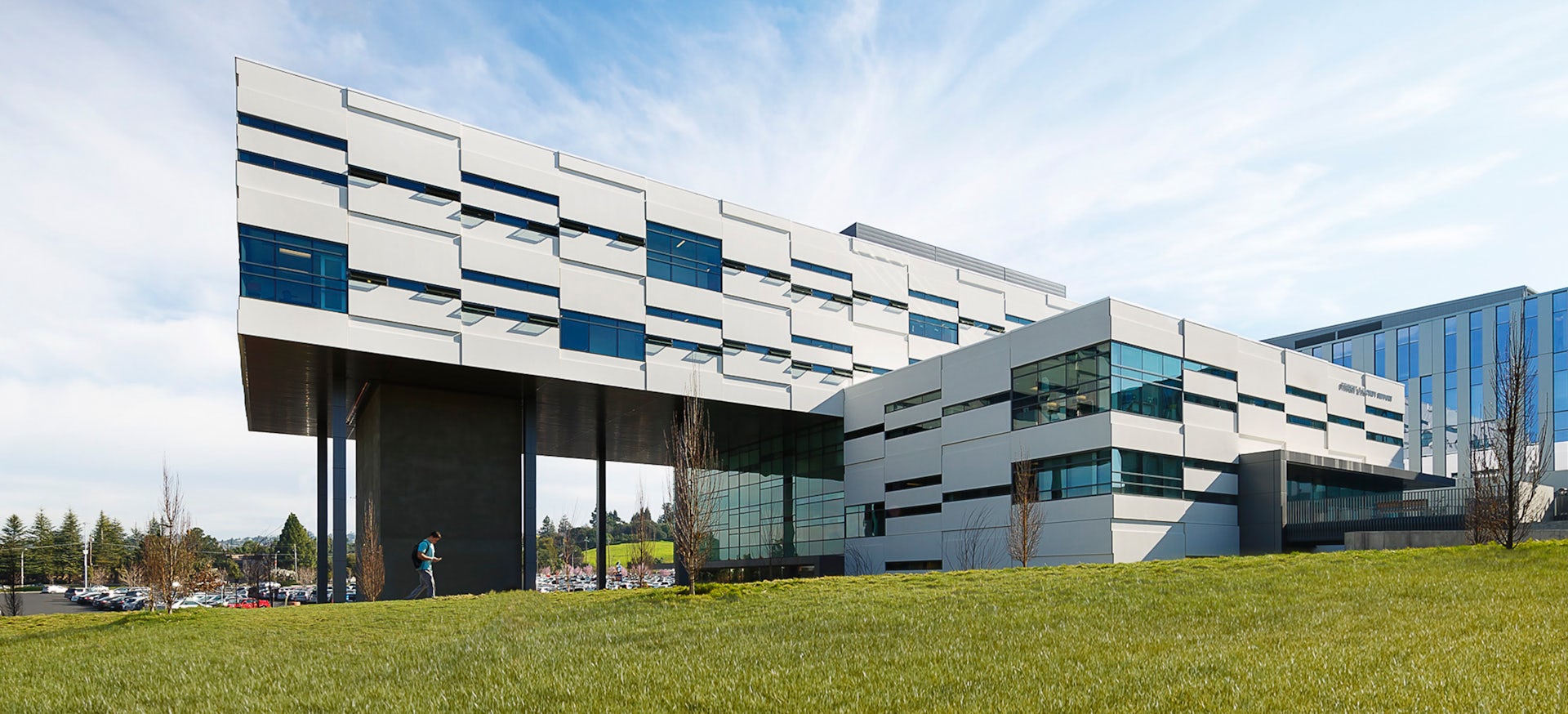(HAYWARD, Calif.) December 8, 2015 — LPA Inc., one of the largest integrated design firms based in California, designed the newly-completed Student and Faculty Support Center building to replace the Warren Hall landmark building at California State University, East Bay (CSUEB). The five-story, 67,000-square-foot building houses faculty offices, support space and the campus Welcome Center.
The original 13-story Warren Hall building, which stood on campus for more than four decades, was demolished in 2013 after it was determined to be seismically vulnerable. Its replacement, located on a different site at the north end of campus, takes inspiration from the campus context and the original Warren Hall building.
LPA’s integrated design team included architecture, landscape architecture, interior design, structural, mechanical and electrical engineering. The project infused each service to create an aesthetic that corresponds to the existing campus while including high-performance functions.
Contemporary and traditional materials are blended to establish a cohesive architectural language. Pre-cast concrete runs horizontally along the façade, a nod to the original Warren Hall. The new L-shaped building utilizes the maximum footprint of the site, while the elevated fourth and fifth floor provides room for a three-story protected entry plaza and outdoor social and gathering space.
“We were able to achieve a signature campus building simply by capturing the essence of the surrounding buildings and the unique site condition,” said Glenn Carels, principal and chief design officer at LPA. He added, “The stepped form of the building provides a unique pedestrian experience in response to how you approach the two separate main entries. The campus side entry is welcoming and fits within the human scale fabric of the campus. In contrast, the parking lot side entry is grand—functioning as a gateway into the campus while making a positive impression on first time visitors.”
The landscape design creates a new pedestrian entry to the campus that plays off of the grade change between the lower campus and the existing quad, while focusing on increased opportunities for campus social spaces. The landscape palette emphasizes native and drought-tolerant species while incorporating edible species where visitors gather.
Structural engineers focused on occupant safety and the long-term seismic resiliency of the building. The building is located less than a mile from the Hayward Fault—one of the most active seismic faults in California. Three ductile reinforced concrete shear wall cores provide durability, strength and stiffness for a building designed to last more than a hundred years.
The project is targeting LEED-NC Gold certification. Other sustainable feature include: high performance glazing, lighting systems and HVAC systems result in a project predicted to exceed Title 24 energy codes by more than 30 percent; an approximately 100-kilowatt rooftop photovoltaic array will reduce predicted energy costs by an additional 25 percent; operable windows on the fourth and fifth floors provide natural ventilation along with dramatic views for the shared circulation spaces; and site landscaping is carefully integrated with bio-retention storm water management strategies to treat site run-off.
The school recently held a building dedication event to celebrate the completion of the project where students, faculty and community members gathered. Jim Zavagno, Associate Vice President of Facilities Development and Operations at CSUEB, said, “What’s so striking to me is the simplicity and efficiency of the interior layout and building systems, married with the sophistication and elegance of the exterior design.”
About LPA Inc.
Founded in 1965, LPA has more than 300 employees with offices in San Antonio and Irvine, Sacramento, San Diego and San Jose, California. The firm provides services in architecture, sustainability, planning, interior design, landscape architecture, engineering and graphics. There is no “Sustainability Director,” at LPA. Instead, nearly 70 percent of the professionals are LEED accredited, including the Human Resources Director, CFO, and several other support staff. With extensive experience in public and private architecture, LPA designs a diversity of facilities that span from K-12 schools, colleges and universities to corporate and civic establishments. More than 600 major design awards attest to LPA’s commitment to design excellence. For more information, visit http://www.lpadesignstudios.com.














